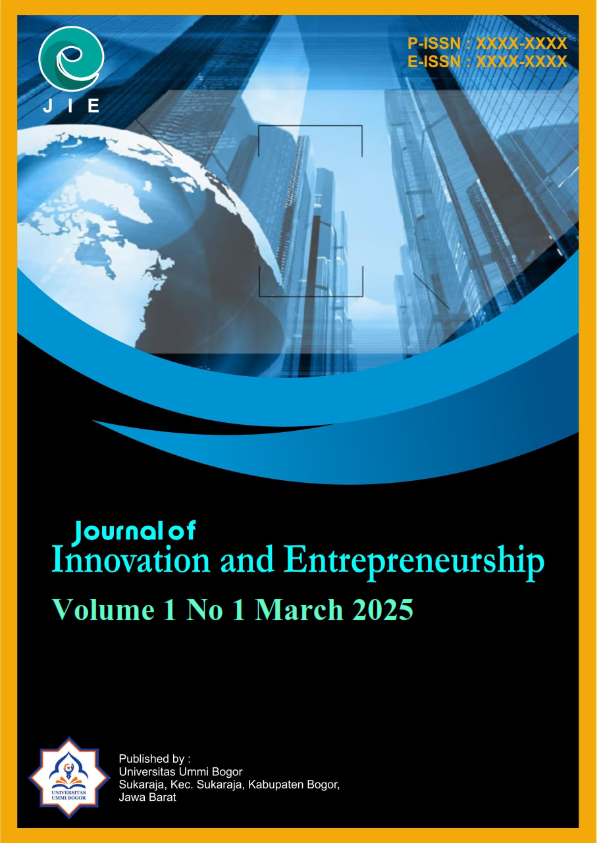Strategi Pengembangan Desa Wisata Maju Desa Wisata Mandiri sebagai Desa Wisata Dukungan untuk Destinasi Pariwisata Prioritas
Studi Kasus Desa Wisata Marinsow, Likupang Timur
Keywords:
tourism village, DPSP, MarinsowAbstract
The development and improvement of tourist villages is one of the agendas in the National Medium-Term Development Plan (RPJMN) for the 2020-2024 period, by establishing five Super Priority Tourism Destinations (DPSP), one of which is Marinsow Tourism Village located in East Likupang, Minahasa Regency. In order to become a Super Priority Tourism Destination, a significant increase in tourism development and community readiness are needed to improve the welfare of the local community through tourism activities. The purpose of this study was to identify the existence, potential, and implementation strategies for the development of Marinsow Tourism Village. The research method used is qualitative research with data analysis techniques using Interpretative Structural Modeling (ISM) based on secondary data. From the results of the study it is known that: 1) In the elements of tourist attraction, many are hampered by land status. The government and community of Marinsow Tourism Village need to increase the capacity of the destination in order to support tourist visits, as well as develop innovation or diversification of products based on independent entrepreneurship according to the market and can develop products that are integrated with other destinations. 2) The most important aspect in developing accessibility of Marinsow Tourism Village is related to the condition of access to the tourism village for people with disabilities, the elderly, and children, as well as access to digitalization. 3) Amenities in Marinsow Tourism Village need to be developed and revitalized in public facilities. 4) Human resource development is very important to maintain and preserve local wisdom, traditions, and customs in the village through education, knowledge, and human resource capabilities in tourism management.
References
Badan Pengembangan Infrastruktur Wilayah Kementerian PUPR. (2020). SINERGI: Sinergi Pengembangan Lima Destinasi Pariwisata Super Prioritas. Badan Pengembangan Infrastruktur Wilayah (BPIW) Kementerian PUPR.
Badan Pusat Statistik Minahasa Utara. (2022). Kabupaten Likupang Timur dalam angka 2022. BPS Kabupaten Minahasa Utara. Diakses pada https://minutkab.bps.go.id/publication/2022/09/26/aed2294e0e44f1a000c218fe/kecamatan-likupang-timur-dalam-angka-2022.html.
Chaerunissa, S. F., & Yuniningsih, T. (2020). Analisis komponen pengembangan pariwisata di desa wisata Wonopolo, Kota Semarang. Jurnal Tinjauan Manajemen dan Kebijakan Publik, 9(4), 159–175.
Darmawan, D. P. (2017). Pengambilan keputusan terstruktur dengan pemodelan struktural interpretatif. Penerbit Elmatera.
Eddyono, F. (2021). Manajemen destinasi pariwisata. Uwais Inspiration Indonesia.
Kementerian Koordinator Bidang Kemaritiman dan Investasi. (2021). Pedoman desa wisata (Edisi II). Kementerian Koordinator Bidang Kemaritiman dan Investasi.
Kementerian Pariwisata dan Ekonomi Kreatif/Badan Pariwisata dan Ekonomi Kreatif. (2022). Sandiaga Uno sebut ada 1.831 desa wisata yang berpotensi tarik wisatawan. Kementerian Pariwisata dan Ekonomi Kreatif/Badan Pariwisata dan Ekonomi Kreatif Republik Indonesia. Diakses pada https://jadesta.kemenparekraf.go.id/berita/17052.
Maharani, M., Poernomo, M. I., & Nurwiyoto. (2022). Elemen kunci pengelolaan ekowisata menghadapi endemik dan pasca pandemi (Studi kasus: Kebun Buah Bogor, Gunung Menyan, Desa Pamijahan, Kecamatan Pamijahan, Kabupaten Bogor, Pantai Panjang dan Tahura di Bengkulu). Seminar Nasional Pariwisata dan Kewirausahaan (SNPK), 1(April), 35–45.
Mufidah, W. U. (2018). Analisis tingkat kepentingan dan kinerja produk wisata di Kampung Gajah Wonderland. Universitas Pendidikan Indonesia. Diakses pada http://repository.upi.edu/44702/5/S_MRL_1105912_Chapter2.pdf.
Peraturan Menteri Kebudayaan dan Pariwisata. (2010). Peraturan Menteri Kebudayaan dan Pariwisata Nomor PM.26/UM.001/MKP/2010. Diakses pada www.jdih.kemenparekraf.go.id.
Stange, J., & Brown, D. (2015). Manajemen destinasi pariwisata: Mencapai hasil yang berkelanjutan dan kompetitif. USAID.
Sugiama, A. G. (2014). Kerangka kerja pengembangan konseptual aset desa wisata. Prosiding SNEB, 1, 1–7.
Sugiyono. (2021). Metode penelitian kuantitatif, kualitatif, dan R&D (Edisi ke-2). Alfabeta.
Wihasta, C. R., & Prakoso, H. B. E. (2013). Pengembangan desa wisata Kembang Arum dan dampaknya terhadap kondisi sosial ekonomi masyarakat Donokerto, Kecamatan Turi. Diakses pada https://media.neliti.com/media/publications/76191-ID-perkembangan-desa-wisata-kembang-arum-da.pdf.
Zakaria, F., & Suprihardjo, R. (2014). Konsep pengembangan kawasan desa wisata desa kota Kecamatan Pak Kabupaten Pamekasan. Jurnal Teknik ITS, 3(2), C245–C249.





